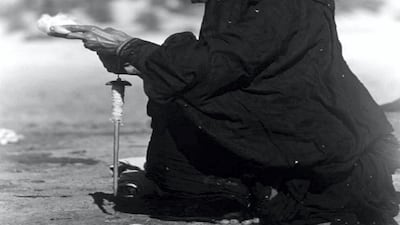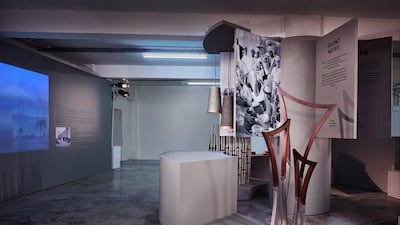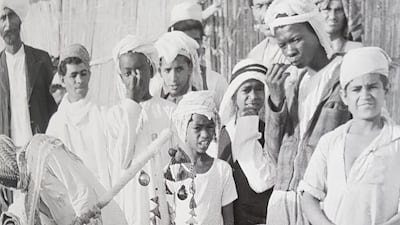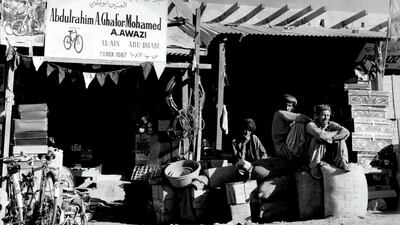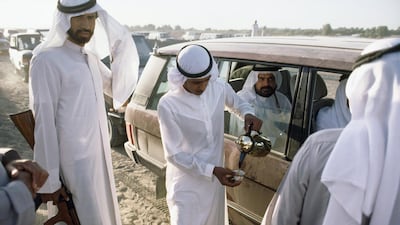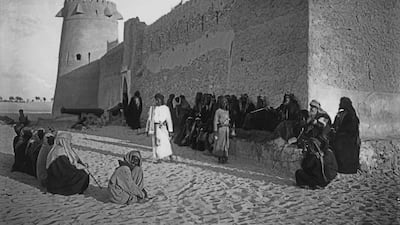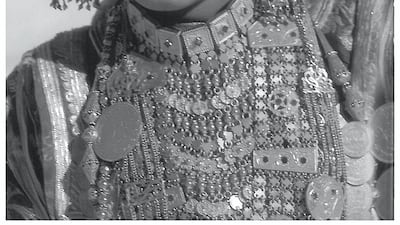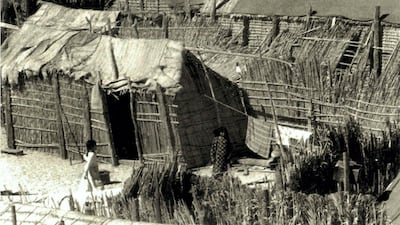First it was the Huguenots, skilled silk weavers from France fleeing religious persecution. Next came Irish linen weavers, economic migrants fleeing industrial collapse and then, from Amsterdam, came the Chuts, entrepreneurial Jews skilled in the making of slippers, cigars and caps.
Bordering the City, London’s financial centre, Spitalfields is a neighbourhood that has attracted skilled artisans for centuries, most recently of a decidedly hipster variety. And this weekend, it was the turn of some Catalans, Finns, Koreans, Italians and Swedes, as well as a group of eight Emiratis. Organised by Dubai Design District (D3) with the support of the UAE’s Ministry of Culture and Knowledge Development, the exhibition, UAE Design Stories: The Next Generation from The Emirates, was one of 12 national pavilions to feature at this year’s London Design Fair.
Following an earlier exhibit in April at Fuorisalone, part of Milan Design Week, that presented existing products by 10 Emirati designers under the heading Emirati Landscape: Flora, Fauna and Soil, this second chapter, titled Objects of the Past: Today, featured a series of eight specially commissioned designs that respond to objects or images from the UAE’s past.
Inspired by traditional arish or palm-frond housing, architect Abdalla Almulla's Tie-In is a modular steel tube and node system that can be used to create room dividers and tables, while Silent Notes, by the established artist and jeweller Azza Al Qubaisi, is a coat stand that takes its form from a traditional stringed instrument, the tanbora.
Some of the products, such as Alia bin Omair's Ejfa, a mirror-tinted 18-carat gold headpiece – inspired by a traditional braided Bedouin hairstyle – stay close to their inspiration in form and function while others don't, for example Roudha Al Shamsi's pendant lights, which echo the shape of a traditional spindle, while the woollen yarn used for their cladding uses traditional pigments such as turmeric, indigo and pomegranate. Salem Al Mansoori's exquisitely 3D-printed Cuphee coffee cups prioritise materiality and process over practicality in their design, while Ahmed Al Reef's installation, Qaser Al Haakim, juxtaposes historic images of Abu Dhabi's Qasr Al Hosn with contemporary footage of its new presidential palace, in a meditation on the pace of change in the emirates and the relationship between tradition and modernity.
“We are showcasing this pool of talented designers, but it’s also an attempt to reflect on the character of Emirati design,” explains the show’s curator, Dubai-based furniture and product designer, Khalid Shafar, whose recent collaboration with the historic French Gobelins tapestry and carpet factory was displayed at Louvre Abu Dhabi as part of the Emirati-French cultural programme Co-Lab: Contemporary Art & Savoir Faire.
“This latest chapter is called Objects of the Past: Today. We asked them to research the history of the UAE through old photographs – from archives, books, libraries or the internet – to find objects that might be reinterpreted either using a new design process, or repurposed to give them a new function,” he says.
In featuring the designs alongside the historical materials that inspired them, which included archive film and old photographs of Abu Dhabi by Ronald Codrai, and early images of Dubai, the exhibition served as both an introduction to the contemporary work and skills of the designers, as well as to older Bedouin objects and traditions.
The exhibits ranged from conceptual pieces to the fully-realised, and while some failed to translate to the crowds that packed the fair, others not only fulfilled Shafar’s brief, but did so with designs that are ready for production and imbued with a distinctive sense of identity and style.
Foremost among these is Aljoud Lootah's Mandoos collection, a series of suede-lined, camel leather jewellery boxes and cases that reference traditional, stud-embellished dowry chests, while employing a weaving technique that echoes the traditional art of khoos, or palm weaving. A canny businesswoman as well as an intelligent, multi-disciplinary designer, Lootah operates out of a studio in Dubai's Design District, where she employs four designers and four interns to produce stationery, gifts, furniture and lighting, as well as special commissions.
Part of the key to Lootah’s success has been the way she has identified routes to market, especially in the field of limited-edition government and corporate gifts, which adopt a similar approach to Emirati heritage and traditions as the one required by Objects of the Past: Today.
This can be seen in her client and commissions list, which includes Abu Dhabi’s former Tourism and Culture Authority, the UAE National Day Committee, the Abu Dhabi Executive Authority and a hand-carved gift for Sheikha Latifa Bint Mohammed Bin Rashid Al Maktoum, in celebration of Eid al-Adha.
Despite this success, when it comes to realising designs in the UAE, Lootah's experience echoes that of her fellow exhibitors. While the UAE offers its young designers support in terms of funding, initiatives, commissions and exhibitions, it is a place where fabrication and manufacturing remain a challenge, despite a recent proliferation in 3D printing.
"Finding the right manufacturer in the UAE is a real challenge," admits Alia Mazrooei, whose colourful Kaj table, rendered in gypsum-based terrazzo resin, takes its inspiration from the conical stands used in the manufacture of the traditional gold and silver braid known as telli. "My designs tends to be unusual, so when they see the deign, they get a shock and they immediately triple the price."
“The manufacturers and craftsmen in the UAE are used to particular ways of working, so when you come up with a crazy idea, they don’t always accept the change,” agrees Lootah, who worked with Abu Dhabi’s Al Khaznah Tannery to produce the camel leather for her Mandoos Collection.
“There was lots of prototyping. I wanted to get the pattern you would have with woven palm fronds. They developed the technique specifically for this collection, and now they call it Joud. It’s an honour.”
Next month, the designers’ works will be displayed in Paris, with an exhibition that also includes the work of an Emirati chef, before it returns to the UAE for November’s Dubai Design Week. The experience of curating the shows has also encouraged Khalid Shafar to reflect on his own journey as an Emirati designer and the future of the industry.
“Because things move so fast in the UAE, it can also put a lot of pressure on us to produce, and that can affect the quality of our designs and creations, and that’s not to our advantage,” he says. “But when I was starting out, one of the biggest challenges was simply getting people to understand what I was trying to do. They understood interior design and construction, but not product design. Things are better now, but it can still be an issue.”
___________________
Read more:
Airdxb is opening doors to facilitate short-term property rentals in the UAE
Crafting a DIY culture in the UAE that will help forge friendships
Elias and Yousef Anastas: the artisans mastering musical chairs
___________________
